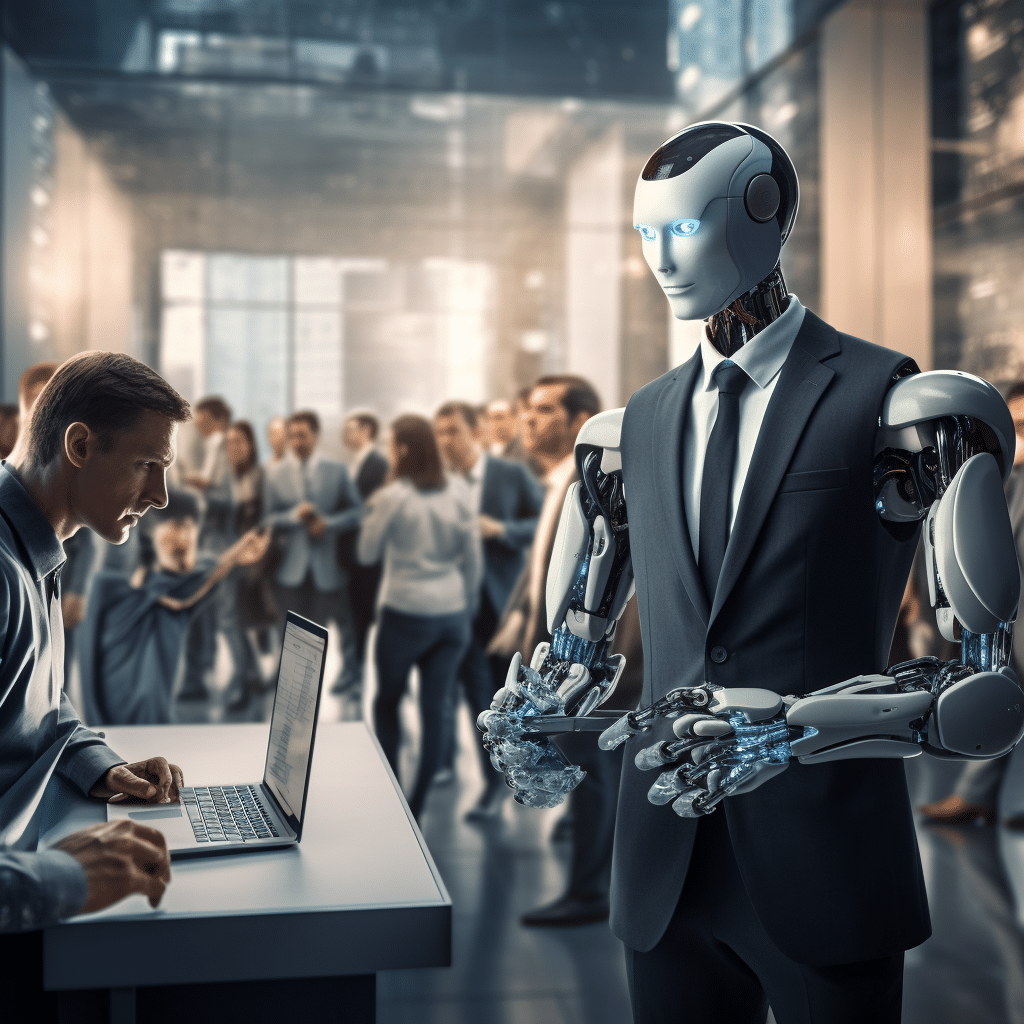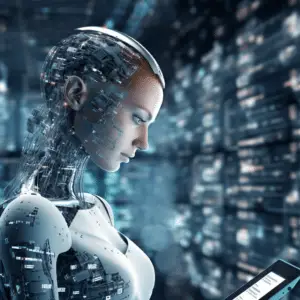
The Future of AI Employment Policies and Regulations
Artificial Intelligence (AI) is rapidly transforming various industries, from healthcare to transportation and finance, with considerable impact on employment practices. As AI systems become more sophisticated, there is a growing need for robust policies and regulations to address their implications in the workforce.

The Changing Landscape of AI in Employment
AI technologies, such as machine learning and natural language processing, are increasingly automating repetitive tasks, leading to concerns about job displacement. However, experts argue that AI will more likely lead to job transformation rather than extinction.
Companies are leveraging AI to augment human capabilities, enabling employees to focus on higher-level tasks requiring creativity, critical thinking, and emotional intelligence. The workforce of the future will likely involve close collaboration between humans and AI systems, leading to new job roles and an increased demand for AI-related skills.
The Need for AI Employment Policies
As AI integration accelerates, it is crucial to establish guidelines and policies ensuring equitable and ethical practices. One major consideration is addressing potential biases encoded in AI algorithms that can perpetuate systemic discrimination in hiring, promotions, and performance evaluations.
Regulations should encourage transparency and accountability, with companies required to explain how decisions made by AI systems are reached. It is essential to strike a balance between fostering innovation and safeguarding against potential risks, particularly regarding privacy and job quality.
Creating a Framework for AI Regulation
Governments, researchers, and industry experts need to collaborate to establish a comprehensive framework for AI employment regulations. Ongoing dialogue should address the challenges posed by AI, covering areas such as:
-
- Ensuring non-discriminatory AI hiring processes.
-
- Creating training programs to reskill and upskill workers affected by automation.
-
- Investing in educational initiatives for learning AI-related skills.
-
- Developing guidelines for AI system accountability and transparency.
-
- Addressing potential job displacement and income inequality concerns.
-
- Protecting employee privacy and establishing data usage regulations.
The Role of International Collaboration
Given the global nature of AI, international cooperation is vital in establishing consistent policies and regulations. Governments and organizations should work together to share best practices, align regulatory approaches, and foster cross-border collaboration in addressing AI’s impact on employment.
Adapting to the Future
As the AI landscape continues to evolve, policymakers must remain agile, regularly updating and refining regulations to keep pace with advancements. Building flexible frameworks that strike a balance between promoting AI innovation and protecting workers’ rights is crucial.
By proactively shaping AI employment policies and regulations, society can harness the benefits of AI systems while proactively mitigating potential risks, ensuring a future where humans and machines collaborate effectively, creating a more productive and equitable workforce.

How can governments and organizations ensure fair and equitable employment opportunities in the era of AI, taking into account potential biases and discrimination in automated systems?
Ensuring fair and equitable employment opportunities in the era of AI requires proactive measures from governments and organizations to address potential biases and discrimination. Here are some steps they can take:
1. Diverse and Inclusive AI Development: Governments and organizations should promote diverse teams while developing AI systems. Including individuals from diverse backgrounds and perspectives helps to mitigate biases during the design and development stages.
2. Data Audit and Testing: Perform regular audits and testing of AI systems to identify any biases or discriminatory patterns. This involves reviewing the training data, algorithms, and outputs of the AI system to ensure fairness and accuracy.
3. Transparent and Explainable AI: Encourage the development of AI systems that are transparent and provide explanations for their decisions. This allows individuals to understand the factors considered by automated systems and detect any potential biases or discrimination.
4. Bias Mitigation Techniques: Implement techniques to mitigate biases during the AI system’s training phase. This may involve evaluating and adjusting training datasets to reduce underrepresentation or overrepresentation of specific groups.
5. Continuous Monitoring and Evaluation: Governments and organizations should continuously monitor and evaluate the performance of AI systems for any biased or discriminatory outcomes. If biases are identified, steps should be taken to rectify and improve the underlying algorithms.
6. Collaboration and Standards: Governments can collaborate with organizations, research institutions, and non-profit organizations to establish industry-wide standards and best practices for unbiased and fair AI systems. This can help foster an environment of accountability and shared responsibility.
7. Human-in-the-Loop Approach: Where feasible, incorporate a human-in-the-loop approach into AI systems. Human oversight and decision-making can help mitigate potential biases and ensure better judgments in complex and sensitive matters.
8. Empowering Employees: Encourage employee training and awareness regarding AI and its potential biases. Employees should be empowered to report any concerns about biased or discriminatory practices.
9. Legislation and Regulation: Governments can enact legislation and regulations that mandate transparency, accountability, and ethical considerations in AI development and usage. This creates a legal framework that organizations must adhere to when deploying AI systems.
10. Public-Private Partnerships: Foster partnerships between governments and organizations to collaboratively address the challenges of bias and discrimination in AI. Sharing expertise and resources can lead to more effective solutions.
By implementing these measures, governments and organizations can strive for fair and equitable employment opportunities while tackling potential biases and discrimination in automated systems powered by AI.
What are the potential challenges and concerns surrounding the implementation of AI in the workplace, and how can they be addressed through effective policies?
Some potential challenges and concerns surrounding the implementation of AI in the workplace include:
1. Job displacement: One major concern is that AI could lead to job losses as machines replace human workers. This can cause economic and social implications.
2. Bias and discrimination: AI systems can be biased and discriminatory if they are trained on biased data or designed without considering diversity and inclusivity. This can lead to unfair treatment of certain individuals or groups.
3. Ethical considerations: AI raises ethical questions around issues such as privacy, consent, and transparency. There are concerns about how AI systems collect, use, and share personal and sensitive information.
4. Data security and privacy: The use of AI requires access to large amounts of data, which can be hacked or mishandled, jeopardizing the security and privacy of individuals and organizations.
5. Lack of transparency and explainability: AI algorithms can make decisions that are difficult to understand or explain. This lack of transparency can lead to a lack of trust and accountability in AI systems.
Effective policies can help address these challenges and concerns by:
1. Upskilling and reskilling: Governments and organizations can invest in programs that help workers acquire new skills and transition to new roles. This can help mitigate the impact of job displacement.
2. Fairness and diversity considerations: Policies should ensure that AI systems are trained on diverse and unbiased data. Additionally, there can be regulations mandating fairness and inclusivity in AI algorithms and decision-making processes.
3. Ethical guidelines and frameworks: Policymakers can establish ethical guidelines and frameworks for the development and use of AI. This can include principles such as transparency, accountability, and responsible use of data.
4. Strong data protection regulations: Policies can require organizations to adopt robust data security measures and ensure transparency in data handling practices. This can help address concerns related to data security and privacy.
5. Explainable AI: Governments and organizations can promote the development and use of explainable AI models that provide clear explanations for their decisions. This can enhance transparency, trust, and accountability.
In summary, effective policies need to address job displacement, bias and discrimination, ethical considerations, data security and privacy, and lack of transparency in order to ensure that the implementation of AI in the workplace is beneficial and ethical.
What role should policymakers play in fostering a collaborative environment between humans and AI, ensuring that AI technologies complement rather than replace human workers
Policymakers have a crucial role in fostering a collaborative environment between humans and AI to ensure that AI technologies complement rather than replace human workers. Here are several key roles they should play:
1. Regulation and Standards: Policymakers should establish regulations and standards governing the development, deployment, and use of AI technologies. These regulations should focus on ethical considerations, transparency, accountability, and data privacy, ensuring that AI is used responsibly and for the benefit of humanity. Additionally, they should promote the use of internationally recognized standards to facilitate interoperability and prevent the creation of AI monopolies.
2. Education and Training: Policymakers should invest in education and training programs to equip workers with the necessary skills to adapt to the changing economy. This includes promoting STEM education, reskilling and upskilling initiatives, and lifelong learning opportunities. By proactively addressing the skills gap, policymakers can prepare workers for the jobs of the future and decrease the risk of displacement.
3. Labor Market Policies: Policymakers need to assess the impact of AI on the labor market and adjust labor market policies accordingly. They should work to create supportive policies that encourage job creation and ensure job security. This includes incentivizing companies to invest in the development of AI technologies while ensuring the protection of workers’ rights and fair compensation.
4. Collaboration and Partnership: Policymakers should actively engage with AI experts, industry leaders, research institutions, and civil society organizations to foster collaboration and partnership. By involving all stakeholders in policy discussions, policymakers can ensure that decisions are well-informed and reflect a diverse range of perspectives. Collaborative efforts can also lead to the establishment of guidelines and best practices that promote a harmonious coexistence between humans and AI.
5. Social Safety Nets: Policymakers should strengthen social safety nets to provide support for individuals who may be disproportionately affected by the integration of AI technologies. This can include developing robust retraining programs, expanding unemployment benefits, and exploring the viability of a universal basic income. Such measures can help mitigate the negative consequences of job displacement and ensure a smooth transition for workers.
In summary, policymakers have a critical role in fostering a collaborative environment between humans and AI. By enacting suitable regulation, investing in education, adapting labor market policies, promoting collaboration, and strengthening social safety nets, they can help ensure that AI technologies complement and empower human workers rather than replace them.









Thank you for your sharing. I am worried that I lack creative ideas. It is your article that makes me full of hope. Thank you. But, I have a question, can you help me?
I like this web blog very much, Its a rattling nice billet to read and incur
info.Raise blog range